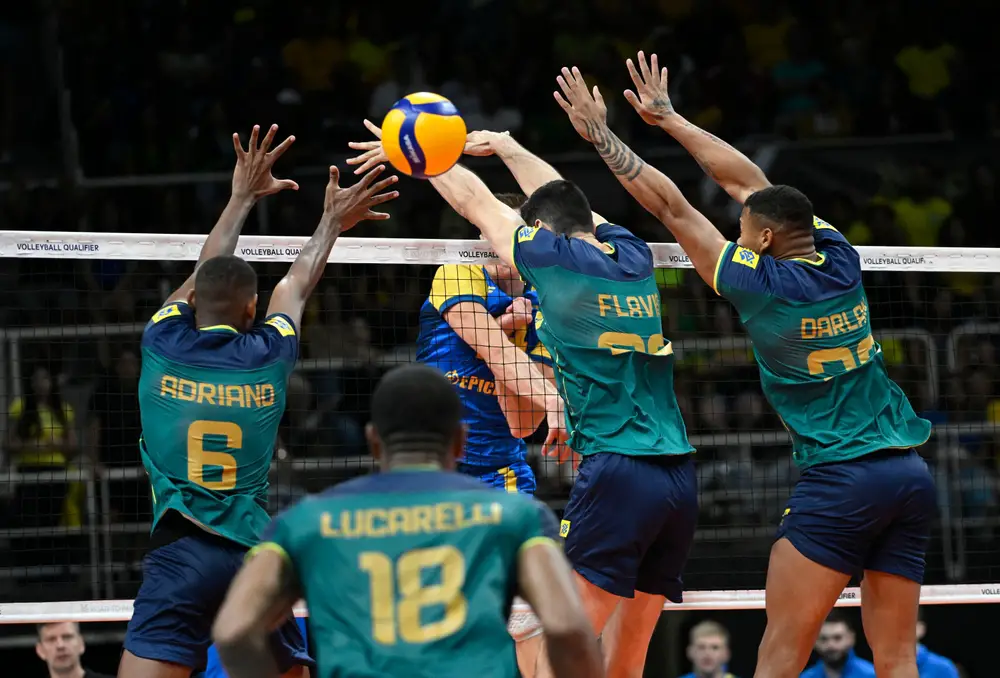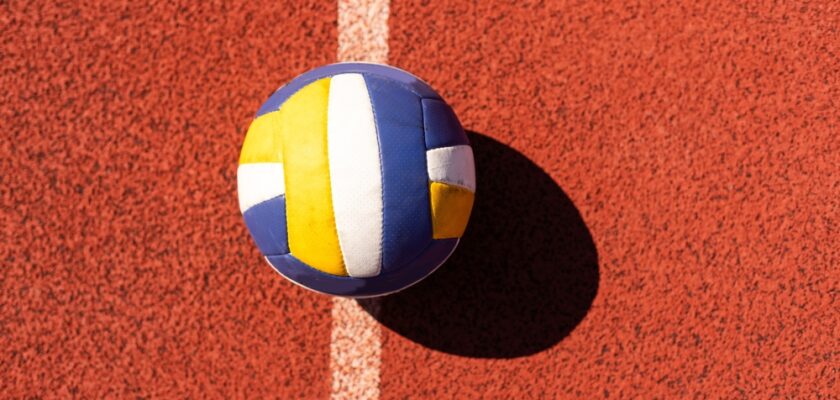Volleyball is a team sport that is very popular all over the world. It was born in 1895, in the United States, and over the years it has evolved to become what it is today, and this has happened both in terms of rules and techniques;
The sport is played by two teams, each with six players, who compete to make the ball touch the ground in the opponent’s court. To fully understand volleyball, however, you need to understand its main terms and meanings.
That’s why we decided to create a volleyball glossary, containing the main terms that define the sport. Check it out and get to know everything about the sport!

Open your Betano account and get up to 1,000 reais in bonuses.
Payments via PIX, live games and super odds!
Click here to open your account!
Volleyball glossary: complete list
- Attack
- Blocking
- Cover
- Cutting
- Defense
- Lifting
- Libero
- Headline
- Pass
- Position
- Rotation
- Draw
- Set
- Replacement
- Touch
- Coach
- Beach volleyball
- Bottom attack
- Antenna
- Ball in
- Out ball
- First ball
- Captain
- Finger
- Lack of rotation
- Clean play
- Attack line
- Point
- Reception
- Attack zone
Volleyball glossary: learn more about the terms
Check out the terms that will be covered in the volleyball glossary!
Attack
The attack is the action of striking the ball with the aim of sending it to the ground on the opponent’s side, scoring a point. It is one of the main offensive movements in volleyball and is usually executed with a cut or a drop.
Blocking
The block is the defense performed at the net with the aim of preventing the ball sent by the opponent from entering your side of the court. It can be done by one, two or three players simultaneously.
Cover
Covering is the act of positioning players around the attacker or blocker to recover balls that are deflected. It is essential to keep the play alive after an opponent’s attack or block.
Slice
The cut is a type of attack in which the player strikes the ball with force and speed towards the opponent’s court. It is the main scoring technique in volleyball and requires a lot of strength, precision and timing.
Defense
Defense is the name given to actions taken to prevent the ball from touching the ground on your side of the court. It can be done through serves, rallies, attacking defenses and dunks. Players who specialize in defending are called liberoes.
Lifting
Lifting is the action of passing the ball to an attacker accurately and with the right height and speed. The player who performs this function is the setter, who plays a crucial strategic role in coordinating attacking moves.
Libero
The libero is a player who specializes in defensive actions. They wear a different uniform and cannot attack, block or serve. His main function is to receive serves and defend attacks, providing greater stability for the team.
Headline
The manchette is a reception and defense technique in which the player uses his forearms to pass the ball. It is often used to receive opponent’s serves and attacks.
Passing
Passing is the action of playing the ball to a teammate in a controlled manner. It’s fundamental to starting the construction of an attacking move. A good pass is essential for the setter to be able to make a good lift.
Position
The position is the specific place where each player should be on the court during a rotation. There are six main positions, numbered from one to six, and each player must know their responsibilities in each of them.
Rotation
The rotation is the compulsory clockwise rotation of the players each time the team wins the right to serve. This rule ensures that all players pass through all positions on the court.
Service
The serve is the term used for the action of starting the game by sending the ball over the net into the opponent’s court. It can be performed in different ways, such as underhand, overhand, floating and traveling serves.
Set
A set is one of the parts into which a volleyball game is divided. A team wins a set by reaching 25 points, with a minimum difference of two points over their opponents. A match is usually played on which team has been better over five sets.
Substitution
In volleyball, a substitution is the replacement of a player on the court by a reserve. There are specific rules about how many substitutions can be made per set and how they should be carried out.
Touch
Touch is the action of making contact with the ball in a volleyball game, which can be done with any part of the body above the waist. The main types of touch are the pass, the lift and the cut.
Coach
The coach is the professional responsible for the technical and tactical preparation of a volleyball team. They have the task of guiding the players during training and matches, making strategic adjustments whenever necessary.
Beach volleyball
Beach volleyball is a variation of the sport, which is played on sand and usually with two pairs. The rules are similar, but there are differences in the court, the number of players and the techniques used.
Back attack
The full-back attack is carried out by a player in the back line, also known as the defensive zone. This type of attack is used to surprise the opposing defense.
Antenna
The antenna is a vertical rod fixed to the side edges of the net, delimiting the playing area. Any ball that touches or passes outside the antenna is considered out of play.
Inside ball
The expression “ball in” refers to a ball that touches the ground within the boundaries of the opponent’s court, resulting in a point for the attacker.
Ball out
“Ball out” is when the ball falls outside the boundaries of the opponent’s court or touches any object outside the playing area, resulting in a point for the opposing team.
First ball
A first ball happens when the ball is attacked directly after the serve or defense, without going through the lift. It’s a fast and very unexpected move.
Captain
The captain is the player responsible for representing the team in front of the referees and making strategic decisions together with the coach.
Finger
“Finger” is the colloquial way of referring to the pass or lift made with the fingertips, also known as the high touch.
Lack of rotation
A rotation fault in volleyball occurs when players don’t follow the correct rotation order during the serve. It is an infraction that results in a point for the opponent.
Fair Play
Fair play refers to the ethical and sporting behavior of players, respecting the rules and the spirit of the game.
Attack line
The attack line is a line three meters from the net, which delimits the area where front-line players can attack. Back line players can only attack from this line.
Point
A point is scored when the ball touches the floor of the opponent’s court, when the opponent commits a foul or when the ball goes out after touching a rival player.
Reception
Reception is the act of receiving the opponent’s serve, preparing the ball to be picked up and attacked. A good reception is crucial for constructing an efficient move.
Attacking zone
The attacking zone is the area between the center line and the attacking line in which the front line players carry out most of their attacks.

Volleyball glossary: complete list
- Attack
- Blocking
- Cover
- Cutting
- Defense
- Lifting
- Libero
- Headline
- Pass
- Position
- Rotation
- Draw
- Set
- Replacement
- Touch
- Coach
- Beach volleyball
- Bottom attack
- Antenna
- Ball in
- Out ball
- First ball
- Captain
- Finger
- Lack of rotation
- Clean play
- Attack line
- Point
- Reception
- Attack zone
Volleyball glossary
That was the glossary of volleyball! Since you’ve come this far and now know a lot more about this activity, take the opportunity to check out our other content on this and many other sports. Don’t forget that your comments are also very welcome here!



